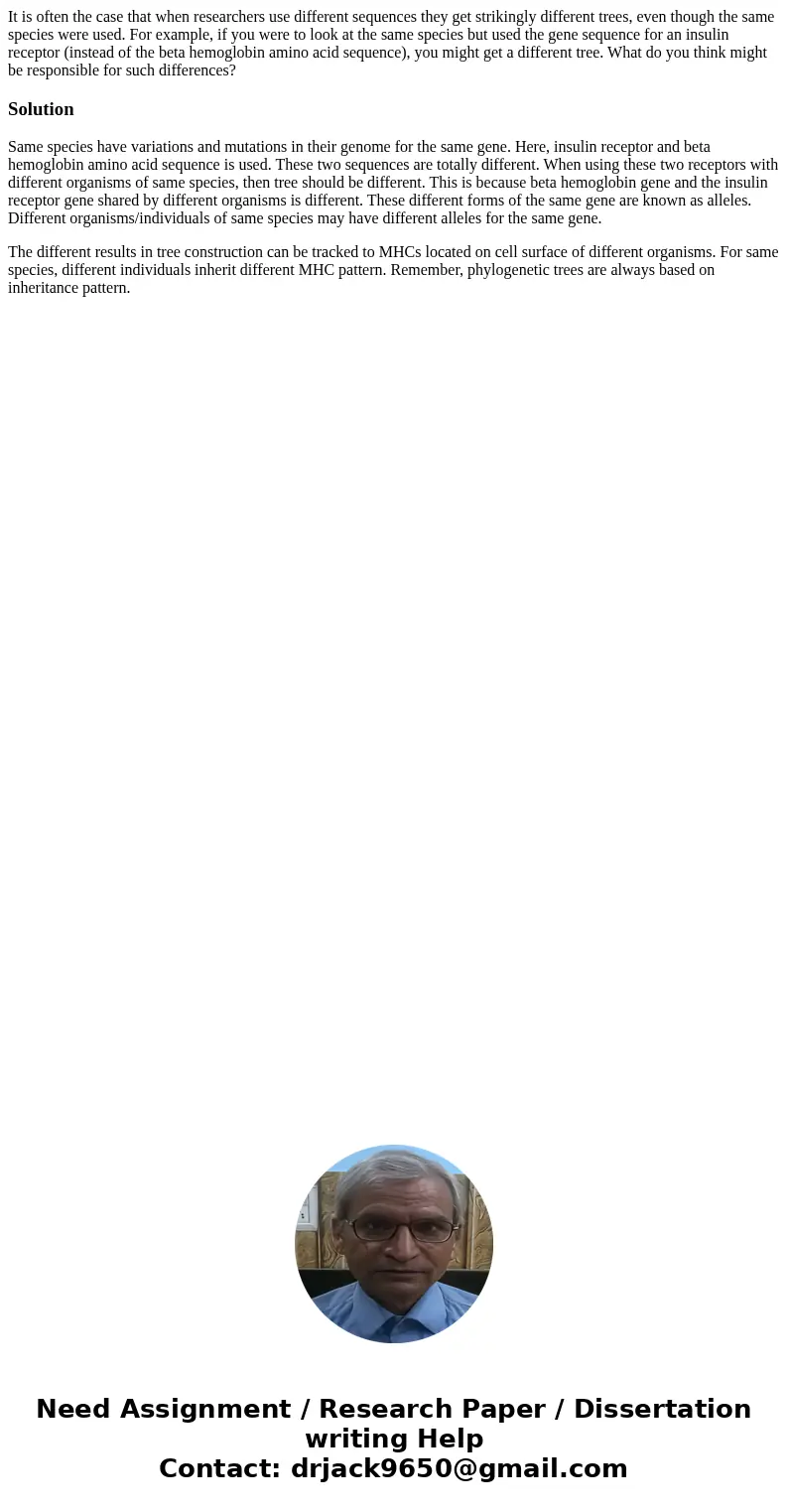It is often the case that when researchers use different seq
It is often the case that when researchers use different sequences they get strikingly different trees, even though the same species were used. For example, if you were to look at the same species but used the gene sequence for an insulin receptor (instead of the beta hemoglobin amino acid sequence), you might get a different tree. What do you think might be responsible for such differences?
Solution
Same species have variations and mutations in their genome for the same gene. Here, insulin receptor and beta hemoglobin amino acid sequence is used. These two sequences are totally different. When using these two receptors with different organisms of same species, then tree should be different. This is because beta hemoglobin gene and the insulin receptor gene shared by different organisms is different. These different forms of the same gene are known as alleles. Different organisms/individuals of same species may have different alleles for the same gene.
The different results in tree construction can be tracked to MHCs located on cell surface of different organisms. For same species, different individuals inherit different MHC pattern. Remember, phylogenetic trees are always based on inheritance pattern.

 Homework Sourse
Homework Sourse